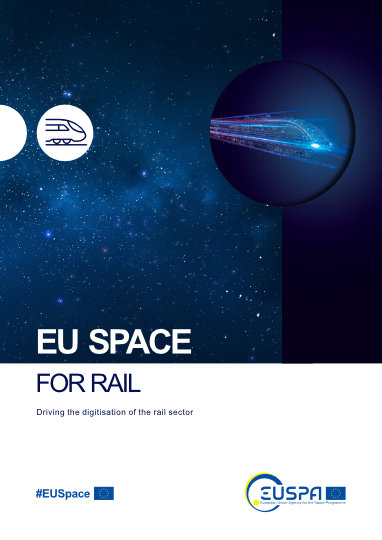Radius - A key player in the digitization strategy in the railway sector
December 7, 2023
The European Union has positioned rail as the backbone of the transport of people and goods. The aim is to achieve the climate targets set and projects are being carried out to develop a smarter and more efficient rail infrastructure. Among them is Radius, which presents a clear improvement in the railway industry. Using drones to carry out non-critical maintenance operations is simpler, safer, cheaper, more efficient, less polluting, and very scalable.
To strengthen rail transport, it is not only necessary to improve the physical infrastructure. It is also important to bring this sector into the Digital Era, a process that relies on EU space technology and is based on global navigation satellite systems (GNSS), as explained by the European Union Agency for the Space Programme and Radius financier EUSPA.

Until now, the use of GNSS in the rail sector has been limited to non-safety related applications, such as asset management and passenger services. However, as EUSPA highlights, this could soon change because GNSS, if complemented by other sensors, meets the stringent safety and integrity requirements of the rail sector.
At this point, Radius plays a relevant role because its technology focuses on increasing safety. Through the use of cameras on the drones, it checks the correct functioning of the switches -a device that allows trains to change from one track to another-; of the level crossings -an intersection at the same level between a railway track and a road or path, and the lineside cabinets -they play a key role in controlling signaling equipment at trackside.
The EU Space Programme's benefits to rail
The EU Space Programme's benefits to rail are extensive, as EUSPA details.
- It detects displacements, identifies trends and sends alerts in case of risks
- Enables visibility of rail cargo in transit
- Improves availability and accuracy and delivers integrity for safe train localization
- Reduces the need for physical beacons and helps reduce operational costs
EGNOS and Copernicus: the EU Space Technology
The global navigation satellite system (GNSS) already has a very important role in railway digitization and performs functions in non-safety related applications. But as previously mentioned, in the near future it will be used in safety-related applications, such as command and control systems. In this way, the capacity of the rail network will increase, reducing operating costs and making the rail sector more efficient and attractive.
The European Navigation Service (EGNOS) contributes to further improving the accuracy and integrity of train location. Its adoption within the European Rail Traffic Management System (ERTMS) will enable the safe use of GNSS, reducing the industry's dependence on costly track-side infrastructure.
Finally, Copernicus contributes to the overall safety of the rail network by providing infrastructure managers with information on risk exposure in relation to vegetation, landslides and flooding.
EUSPA and Radius have a common goal of using the benefits of these technologies to improve performance, cost efficiency and enhance safety to strengthen the competitiveness of European railroads.

